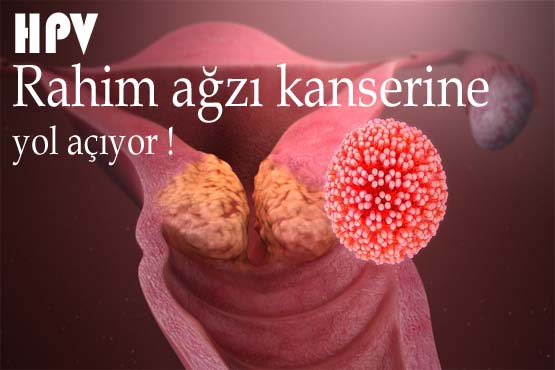HPV and Cervical Cancer

Papillomaviruses were proven to be carcinogenic in 1930. However, only in the 1990s HPV was proven to be the main cause of cervical cancer.
Transition from one CIN (SIL) degree to other is a process that takes years. In other words, a person with CIN 1 on Monday cannot have CIN 2 on Tuesday. Different cellular changes can exist in a person at the same time. While there is CIN 3 in some parts of the cervix, CIN 2 or CIN 1 can accompany it. In the next stage after CIN 3, the cellular changes reach the basal membrane layer, but do not exceed it, and the condition called carcinoma in situ occurs. Carcinoma in situ means you are about to get cervical cancer now. In the next stage, the cancer cells cross the basal membrane and cervical cancer develops.
Cervical cancer mostly manifests itself in the form of bloody discharge, bleeding after sexual intercourse, irregular bleeding, and postmenopausal bleeding. 28% of patients apply to our clinic with abnormal Pap smear test results. If the disease is at an advanced stage, it may cause findings such as sciatic pain, edema in the leg, and enlarged kidney canals (hydronephrosis) due to involvement of the pelvis bones and urinary tract.
Treatment procedure of cervical cancer is determined based on the stage of the disease. While surgical procedures are performed in the early stages, radiotherapy and chemotherapy are applied in the advanced stages.
This article may also interest you

Fear of transmitting the disease to each other reduces sexual desire and pleasure from intercourse in couples and negatively affects sexual activity.
Read more

 TR
TR SQ
SQ